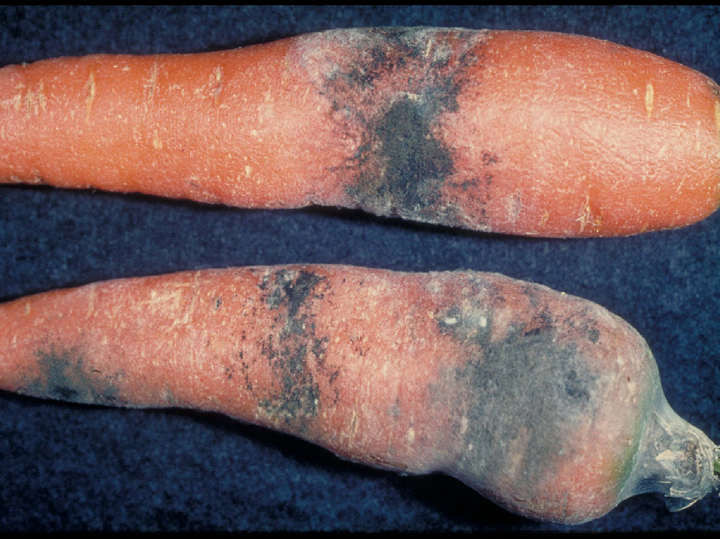Black root rot
Thielaviopsis basicola
Host plants
The fungus exhibits a wide host plant range. The following host plants are attacked:
- Legumes (Fabaceae) such as peanut, soybean, clover, alfalfa, lupine, bean, pea, field bean.
- Solanaceae (nightshade family) such as tobacco and tomato
- Cucurbits (Cucurbitaceae) such as cucumber and pumpkin
- Umbelliferae (Apiaceae) such as carrot and celery
- Foxtail family (Chenopodiaceae) like turnip
- mallow family (Malvaceae) like cotton
- many ornamental plants from numerous plant families, especially during seedling cultivation
Propagation and transmission
Thielaviopsis basicola is a soil-borne pathogen that can persist in the soil for a long time. The fungus infects plants through wounds or lesions caused, for example, by other pests. Spores are formed on and in damaged tissue and released through the epidermis. When infected tissue decays and rots, the spores enter the soil, persist for extended periods, and in turn infect other plants or infest plant debris.
The fungus grows and sporulates best at temperatures between 25°C and 28°C. However, it can cause damage even at temperatures between 15 °C and 20 °C. The disease is promoted by high moisture, neutral to alkaline soils, and nitrogen fertilizers. Soil conditions such as pH > 7, calcareous fertilizers, alternating dryness and wetness, low soil activity, low humus content, low C/N ratio, weak soil aeration, compaction and siltation, intensive tillage, rotary equipment also promote carrot storage black rot.
During the washing process, spores are detached from carrots and can get onto other carrots, where they mainly enter via (even very small) injuries caused by the washing process.
Prevention and control
- Gentle harvesting process. Dry and thus hard soils cause injuries to the carrots during harvesting, which are entry points for the fungus.
- Store ripened, unwashed and uninjured carrots.
- Exclude fields from which infections have been carried to storage from cultivation with carrots and other host plants for at least three years.
- Refrigerate produce packed in plastic film to prevent the fungus from growing. Temperatures below 5 °C are necessary for this purpose.
- The fungus has a wide host plant range, so be mindful of this when rotating crops.
Last updated: 23.11.2021
automatically translated
